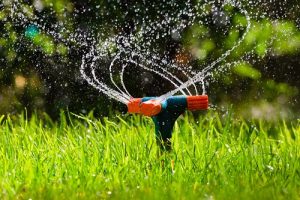 Your lawn reacts to the wakeup call of nature’s spring. When this happens, you need to prepare the lawn for a year of good and healthy growth by providing it the lawn care it needs so it would thrive. By dealing with some basic chores, you will prepare your lawn to protect itself against the wave of weeds, drought, and diseases that the New Year brings.
Your lawn reacts to the wakeup call of nature’s spring. When this happens, you need to prepare the lawn for a year of good and healthy growth by providing it the lawn care it needs so it would thrive. By dealing with some basic chores, you will prepare your lawn to protect itself against the wave of weeds, drought, and diseases that the New Year brings.
Lawn Care Tips
Rake
Get rid of lingering grass blades and fall leaves that failed to survive winter by spring raking. If left alone, the dead blades would add to the thatch layer of your lawn. Raking will also help loosen up the matted grass clumps that are caused by snow mold, which could stifle new growth. Grab a spring tine rake and pull it upward to get rid of dead grass. It is better to rake if the soil is not muddy and soft because if you do, you will risk pulling up grass crowns that are healthy. If you’re unsure, you can call a lawn expert.
Overseed
Another important lawn care in Myrtle Beach tip is overseeding. It can help you fill thin or bare spots in the lawn. The best time to overseed your warm-season grass is in late spring. Fall is the best time for cool-season grass however, in colder places, spot seeding small spots during spring can bring about great results. If you overseed, add slow-release nitrogen fertilizer. After five weeks, the next thing you need to do is add a quick-release nitrogen feed.
Aerate
Aeration is crucial for a healthy lawn and it is considered the best solution when dealing with compacted soil. The frequency of aerating your lawn will depend on how you use your lawn and its soil type. From late spring down up to early summer is the perfect time to aerate warm-season grasses. Fall is the perfect time for cool season variations. However, if you are unable to get to it during the fall, you could deal with it in early spring.
Dethatch
Spring is the perfect time to dethatch the turf. Do this on your cool season grasses during early spring and during early summer for warm season grasses.
Weed
In case crabgrass is an issue in your lawn, add the preemergent herbicides to prevent the seeds that dropped during summer from germinating. The application requires timing. The majority of product bags provide instructions when it comes to application timing.
For your warm season lawns, make sure that you use post-emergent broadleaf herbicides for winter and perennial annual weeds. When perennial weeds begin to appear in cool-season lawns, make sure that you treat or dig them.
Fertilize
Add spring fertilizer for roughly three weeks once the grass begins to green. Add too early and you will run the risk of feeding the weeds and causing fertilizer runoff. If you apply it too early, you will cause a lush lade growth at a time when the roots might not have begun their spring growth spurt.
Water
Spring irrigation has to differ by region. For arid desert and mountain areas, be sure to water lawns regularly and increase the frequency of irrigation as temperatures rise.
Mow
Begin mowing if the ground is dry and the grass is long enough to warrant cutting. Cut the correct height for the grass type you have. Don’t mow too low. If the grass is cut too short, the sunlight will be allowed to reach the soil, which will encourage the germination of weed seeds. It also encourages the development of shallow roots, which will make the lawn at risk of suffering from drought stress.
Call Conner’s Lawn Care Service if you need help in taking care of your lawn.
Conner’s Lawn Care Service
Myrtle Beach, SC
843-504-4901
http://connerslawncare.com/